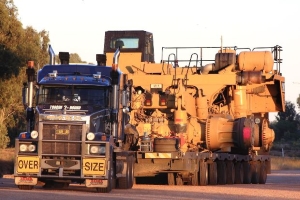Understanding How LTL Freight Classes are Determined
Calculating the Cost of Nationwide Less than Truckload Shipping
LTL cargo shipping refers to a shipment that does not necessarily fill an entire 53 ‘ trailer. LTL and FTL shipments are broken up into multiple different freight classes that will ultimately be used to determine their shipment costs. These classes are determined using a strict industry formula determined by the National Motor Freight Traffic Association (NMFTA). However, many consumers and business owners, despite regularly using shipping and logistics services, rarely have any idea how freight classes are determined.
LTL Freight Classification Chart
| Class 50 | over 50 lbs |
|---|---|
| Class 55 | 35 - 50 lbs |
| Class 60 | 30 - 35 lbs |
| Class 65 | 22.5 - 30 lbs |
| Class 70 | 15 - 22.5 lbs |
| Class 77.5 | 13.5 - 15 lbs |
| Class 85 | 12 - 13.5 lbs |
| Class 92.5 | 10.5 - 12 lbs |
| Class 100 | 9 - 10.5 lbs |
| Class 110 | 8 - 9 lbs |
| Class 125 | 7 - 8 lbs |
| Class 150 | 6 - 7 lbs |
| Class 175 | 5 - 6 lbs |
| Class 200 | 4 - 5 lbs |
| Class 250 | 3 - 4 lbs |
| Class 300 | 2 - 3 lbs |
| Class 400 | 1 - 2 lbs |
| Class 500 | < 1 lb |
Definition of LTL Freight Classification
LTL freight classes, as determined by the NMFTA, establishes a commodity's transportability. These calculations drive the price of shipment. The NMFTA uses 4 main factors (density, stowability, handling and liability) to determine how to classify freight.
Direct Drive Logistics believes that by keeping our customers informed, everyone wins. Browse through this quick guide on the freight class determination process, and let us help you discover a few ways to save a few dollars on your next big shipment.
Contact Direct Drive Logistics 1-877-633-5045
The Four Components of Freight Class
The actual freight class determination in the form of a number from 50 to 500. Shipments with numerical value on the lower end of the spectrum carry lower tariffs; therefore, they are going to be cheaper for shipping companies to handle and ship. The exact opposite is true for shipments closer to 500, as often this cargo is extremely pricy to transport.
All freight classes are determined by the National Motor Freight Classification using the following criteria:
(1)
Freight Density
The density is how much space the item takes up vs. its weight. Low density items tend to take up much more space, which really drives up shipping costs.
(2)
Stowability
How easily is the freight stored? Will it require a flat bed truck or standard dry van? Hazardous materials or cargo with unique protrusions, length or excessive weight may be difficult to load with other freight and drive up the cost.
(3)
Potential Liability
What is the likelihood of freight damage or theft? How likely is it to damage other freight? These factors are crucial to determining the freight class.
(4)
Ease of Handling
Some freight requires special loading or unloading methods beyond simple mechanical equipment. Hard-to-handle items earn a different class and bear larger costs.
Each of these categories is evaluated using quantifiable data, whose sums add up to make the LTL freight class.
How to Lower Your LTL Freight Class
Following all FTL shipping rules and working closely with our clients to plan ahead, Direct Drive Logistics will do everything possible to lower their shipment’s freight class, and broker top notch logistic services. A few of our basic methods include:
- Utilize a smaller shipping container. Why use a 53' storage container when a 40' container is all that's really needed?
- Planning ahead with our shippers and owner operators to opt for longer, less time-sensitive transit times (and lower costs)
- Choosing the right shipping class
- Optimum carrier selection for your cargo
While some of these tips may appear to be simple, many logistics companies focus only on getting your shipment in transit as soon as possible. They cut corners and use too large of shipping containers, use the wrong shipping class, and don’t want to put in the work, or simply don’t have the contacts to find the best possible carrier possible. We promise that with us, you will receive nothing short of 100 percent satisfaction, guaranteed!

Heavy cargo requiring special flatbed shipments will require a higher class rating than most high density freight.
How to Get the Freight Class Right the First Time
There are numerous examples of companies miscalculating the freight class, getting grief from the freight carrier, and wasting time and resources getting it corrected.
Estimates of the freight classification based on the type of goods, how they're packaged, and their weight and dimensions (density) are just that - estimates. The final determination is made once the goods are packed and ready to be shipped.
Direct Drive Logistics can't make a profit and offer you the lowest price on LTL freight without ensuring proper LTL freight classification. We're familiar with all sorts of different freight, how they are best packaged, and how to get you the lowest LTL class rating possible to minimize your freight costs. Work with DDL, and watch your margins rise.

